Ionic air purifier is a device that is able to eliminate various types of airborne particles and pollutants from the air through dispersing negatively (and/or positively) charged ions or ozone. According to what type of substance is dispersed through an ionic air purifier, there are two types of air ionizers: negative ion generators and ozone generators. The first type of air purifiers disperse negatively charged ions into the air. These negatively charged ions occur naturally by waterfalls or after thunderstorms and have an ability of cleaning the air from various pollutants. Generated by ionic air purifiers , negatively charged ions can then be attracted by positively charged airborne particles, such as dust and mold. These airborne particles can then attach to the nearby surfaces, such as walls or furniture, leaving the air cleaner.
Ionic air purifier
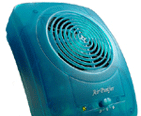 The simplest types of air ionizers use static charges to eliminate pollutants from the indoor air. The airborne particles attached to negatively charged ions then deposit on the walls, floors, curtains and other surfaces in the area. The disadvantage of such air cleaners is that they cannot remove the deposits of pollutants from any surfaces. More complicated units are constructed in order to prevent the deposition of pollutants to surfaces. They also release negatively charged ions causing airborne particles become charged. These particles are then collected in a cleaner on an electrostatic charged panel filter. In other ionizers, negatively charged particles are passively moved back to the ionizer, which has a positively charged sleeve or cover. There are two types, a one-stage or a two-stage, design for airborne particle collection. A two-stage design is more complicated, more efficient and, hence, more expensive, while a single-stage design is less effective since a charged medium is used both to charge and collect airborne pollutants.
The simplest types of air ionizers use static charges to eliminate pollutants from the indoor air. The airborne particles attached to negatively charged ions then deposit on the walls, floors, curtains and other surfaces in the area. The disadvantage of such air cleaners is that they cannot remove the deposits of pollutants from any surfaces. More complicated units are constructed in order to prevent the deposition of pollutants to surfaces. They also release negatively charged ions causing airborne particles become charged. These particles are then collected in a cleaner on an electrostatic charged panel filter. In other ionizers, negatively charged particles are passively moved back to the ionizer, which has a positively charged sleeve or cover. There are two types, a one-stage or a two-stage, design for airborne particle collection. A two-stage design is more complicated, more efficient and, hence, more expensive, while a single-stage design is less effective since a charged medium is used both to charge and collect airborne pollutants.
Ionic air purifier features
The effectiveness depends on the size of the collecting plates, the flow rate and the strength of the electrical field. The particle collection efficiency is reduced due to a longer use, as the collecting plates become covered with the particles. There are a lot of advantages concerning ionic air purifiers . An ionized room offers many health benefits, therefore air ionizers are being chosen by people who suffer from allergies, asthma and other respiratory diseases, since ionic air purifiers are efficient in eliminating dust, pollen, mold, cigarette smoke, harmful bacteria and viruses from the air. In addition, in combination with ozone generators ionic air purifiers become even more effective as they can remove unpleasant odor. These devices are very cost effective due to their low energy costs because of low pressure drop. The precipitating cell is reusable and it only requires periodical cleaning that saves long-term filter replacement costs. However, as all devices, ionic air purifiers also have a few disadvantages. Although the airflow through the units remains the same with use, ionic air purifiers become less efficient with time. Collecting cells require frequent cleaning and can release ozone as a by-product. And when price is concerned, ionic air purifiers have a relatively high initial cost including expensive installation. Additionally, charged particles can discolor room walls, furnishings and other room surfaces.
Advantages of ionic air purifier
Despite all the disadvantages of ionic air purifiers and ozone generators, these devices are widely used for residential air purification. There are different modes of ionic air purifiers, such as room, home air purifiers. They are cost effective, portable, very easy to use, efficient in cleaning the air from various pollutants and odors, and requires easy maintenance. Although they are less effective than HEPA air filters but also are less expensive. Some manufacturers claim that the efficiency of ionic air purifiers equals to that of HEPA air filters, however, this is misleading. There are also some claims that there is a possibility to produce negative ions without actually producing ozone as a by-product but there are no evidence based data to prove such information. One should know that even though ionic air purifiers work well, they are of a limited use when very small particles are concerned, since they cannot remove very small particulates from the air. Recent experiments unfortunately show that ionic air purifiers even combined with ozone generators are less effective in removing dust, pollen, mold and tobacco smoke than any other air purifiers. Since there are so many controversy discussions and debates concerning ionic air purifiers, it is every consumer’s choice whether to use them or not.
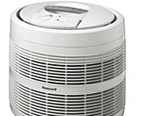 The history of HEPA air purifiers began in 1940’s in the United States where a very first HEPA air purifier was developed. Its purpose was to protect against radioactive pollution. It was then modified for people’s private use and introduced into sales within 10 years after the first HEPA air purifier had been constructed. Since the efficiency of HEPA air purifiers was very high, they became very popular among customers worldwide. Even more, a HEPA filter became an officially registered trademark for very effective filters. U.S. Department of Energy has very high stated requirements that companies must pass in order to fulfill the
The history of HEPA air purifiers began in 1940’s in the United States where a very first HEPA air purifier was developed. Its purpose was to protect against radioactive pollution. It was then modified for people’s private use and introduced into sales within 10 years after the first HEPA air purifier had been constructed. Since the efficiency of HEPA air purifiers was very high, they became very popular among customers worldwide. Even more, a HEPA filter became an officially registered trademark for very effective filters. U.S. Department of Energy has very high stated requirements that companies must pass in order to fulfill the 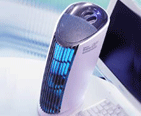 Various UV air purifiers are used to eliminate airborne infection in medical or dental objects, or in any other places where a big risk of infection exists. The method used in air purifiers of this kind is called Ultraviolet Germicidal Irradiation (UVGI). Due to the small size of various viruses and some bacteria, they cannot be caught and eliminated from the air by simple media filters. Hence a UV air purifier is needed to clean the air from airborne pathogens and prevent from the spread of infection. Airborne microorganisms are being eliminated from the air when exposed to specific levels of UV radiation. These levels vary with the type and concentration of bacteria or viruses present in the air.
Various UV air purifiers are used to eliminate airborne infection in medical or dental objects, or in any other places where a big risk of infection exists. The method used in air purifiers of this kind is called Ultraviolet Germicidal Irradiation (UVGI). Due to the small size of various viruses and some bacteria, they cannot be caught and eliminated from the air by simple media filters. Hence a UV air purifier is needed to clean the air from airborne pathogens and prevent from the spread of infection. Airborne microorganisms are being eliminated from the air when exposed to specific levels of UV radiation. These levels vary with the type and concentration of bacteria or viruses present in the air. 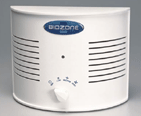 Ozone is relatively stable in the air and can be a strong oxidizer in both water and air. According to these properties, ozone has been used since the end of the 19th century in drinking water cleaning methods. As an oxidizer, nowadays ozone is used in many water treatment applications, such as the treatment of municipal water and wastewater, marine waters, swimming pools, beverage businesses, food processing and many others. The purpose of water purification by ozone is not to kill all harmful microorganisms but to keep their numbers down at safe levels to achieve an efficient disease control. Known as an efficient compound in water purification, ozone was introduced into air cleaning systems a few decades ago. It was first used in uninhabited environments, such as fire or flood damaged houses, to prevent from microbial growth there.
Ozone is relatively stable in the air and can be a strong oxidizer in both water and air. According to these properties, ozone has been used since the end of the 19th century in drinking water cleaning methods. As an oxidizer, nowadays ozone is used in many water treatment applications, such as the treatment of municipal water and wastewater, marine waters, swimming pools, beverage businesses, food processing and many others. The purpose of water purification by ozone is not to kill all harmful microorganisms but to keep their numbers down at safe levels to achieve an efficient disease control. Known as an efficient compound in water purification, ozone was introduced into air cleaning systems a few decades ago. It was first used in uninhabited environments, such as fire or flood damaged houses, to prevent from microbial growth there.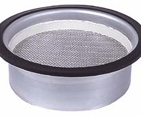 The simplest technique is media filtration, which involves a filter most often made from an advance technology paper, textile, metal, synthetic, glass, or other material. The media filtration in a HEPA filter is made of submicronic glass fibers, that is as thick as blotter paper. As air is blown through the filter, usually with a blower attached to a motor, indoor allergens such as smoke, pollen, dust, mold spores, and bacteria, become trapped in the filter while the air flows freely through the filter. Harmful particles are eliminated from the air and the air that returns to the room is clean and fresh afterwards. The disadvantage of such cleaning method is that the air purifier needs a periodical filter replacement. The period of replacement is due to the amount of airborne particles that an air purifier is exposed to.
The simplest technique is media filtration, which involves a filter most often made from an advance technology paper, textile, metal, synthetic, glass, or other material. The media filtration in a HEPA filter is made of submicronic glass fibers, that is as thick as blotter paper. As air is blown through the filter, usually with a blower attached to a motor, indoor allergens such as smoke, pollen, dust, mold spores, and bacteria, become trapped in the filter while the air flows freely through the filter. Harmful particles are eliminated from the air and the air that returns to the room is clean and fresh afterwards. The disadvantage of such cleaning method is that the air purifier needs a periodical filter replacement. The period of replacement is due to the amount of airborne particles that an air purifier is exposed to.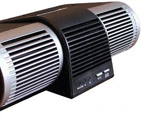 Ozone, sometimes referred to as activated oxygen, is a very strong oxidizer and has been used in water cleaning since 19th century. Beneficial results can be achieved by introducing a large amount of ozone into areas where people are not exposed. Great concentrations of ozone are used to eliminate microbial growth in meat storage, and to prevent from microbial growth from fire or flood damaged houses. However, ozone has been introduced in ozone generators for cleaning the air where humans are exposed. There is a huge concern of positive and negative effects of ozone in nearby areas. Ozone created by ozone generators circulates in the air and reacts chemically with different airborne particles.
Ozone, sometimes referred to as activated oxygen, is a very strong oxidizer and has been used in water cleaning since 19th century. Beneficial results can be achieved by introducing a large amount of ozone into areas where people are not exposed. Great concentrations of ozone are used to eliminate microbial growth in meat storage, and to prevent from microbial growth from fire or flood damaged houses. However, ozone has been introduced in ozone generators for cleaning the air where humans are exposed. There is a huge concern of positive and negative effects of ozone in nearby areas. Ozone created by ozone generators circulates in the air and reacts chemically with different airborne particles. There are various kinds of air purifiers:
There are various kinds of air purifiers: 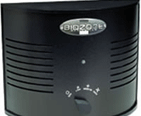 The method does not allow the concentrations of ozone in the indoor air to exceed recommended, safe levels. It is based on the principle that the
The method does not allow the concentrations of ozone in the indoor air to exceed recommended, safe levels. It is based on the principle that the